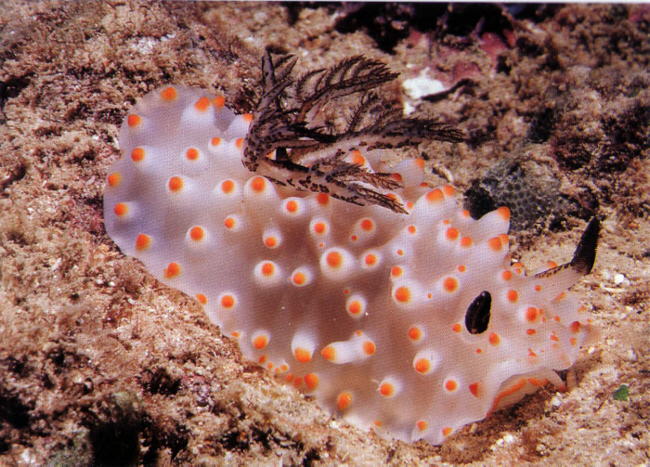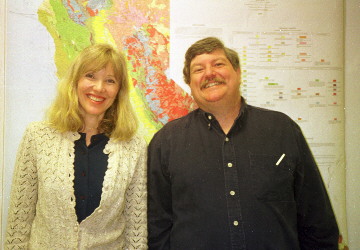 |
Brigadier Island, Dampier Archipelago, Western Australia
Halgerda brycei
Fahey and Gosliner, 2001
This lovely animal has so far been found only in the northern reaches of Western Australia, a rather remote location to say the least. This species was named for Clay Bryce of the Western Australian Museum. Clay was the first to find it in 1987 and has done more than can be possibly mentioned here for nudibranch research.
You could mistake Halgerda brycei for Halgerda carlsoni due to the similar, large, orange-tipped tubercles covering the dorsum. But H. brycei has no other colored markings between the tubercles, whereas H. carlsoni has tiny orange dots. Halgerda batangas also has a similar appearance, but that species has a fine, orange network between the orange-tipped tubercles. Halgerda brycei has a large, feathery gill structure like many Halgerda and dark-tipped rhinophores. Look for the dark stripe on the posterior side of the rhinophores too. Halgerda carlsoni lacks the dark stripe and H. batangas has dark spots on the anterior of the rhinophores. Another similar species, Halgerda stricklandi has a yellow rhinophore club with similar orange tubercles on the dorsum. The other differences between these species are internal, with the radula and reproductive systems having distinct differences.
Queensland, Australia
Oct. 2001
Citation
Shireen J. Fahey and Terrence M. Gosliner. 2001.On the genus Halgerda (Nudibranchia: Halgerdidae) from Western Australia with descriptions of four new species. Bollettino Malacologico, Roma, 37 (5-8): 55-76, 2001-Societa Italiana di Malacolgia
Top photo courtesy of Clay Bryce
Taxonomic text courtesy of Shireen Fahey

After having completed my Masters Degree in Marine Biology at San Francisco State and the California Academy of Sciences with Terry Gosliner, I decided I was having too much fun to stop. I had worked on the genus Halgerda , and had described 15 new species during that time. So what do you do to continue nudibranch research? Having heard no other reasonable suggestions, I decided I had to go for my Ph.D. It was deciding on my research questions that led me to Queensland Australia. First of all, this location is rather well known for having superb coral reefs, and incidentally where some Halgerda just happen to call home. Secondly, the people doing the particular marine research I am interested in are here at the University of Queensland. My primary advisor is Associate Professor Mary Garson in the Department of Chemistry. Terry is my co-advisor for the systematics aspect of my research. |
Send Shireen email at sfahey@mailbox.uq.edu.au
Send Terry email at tgosliner@calacademy.org
